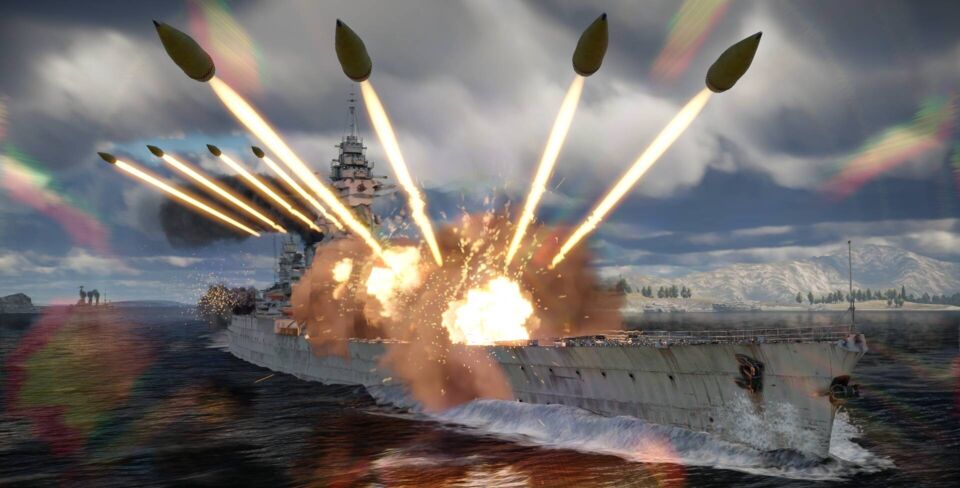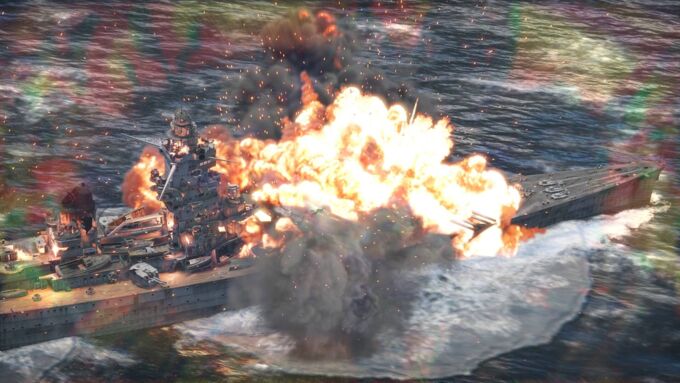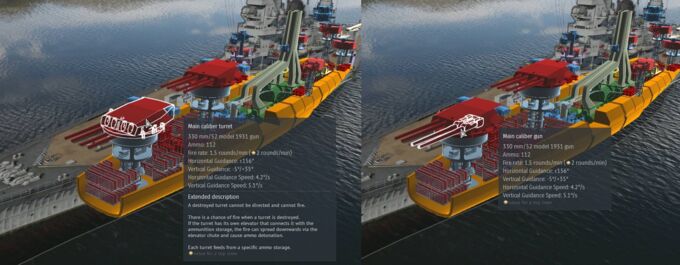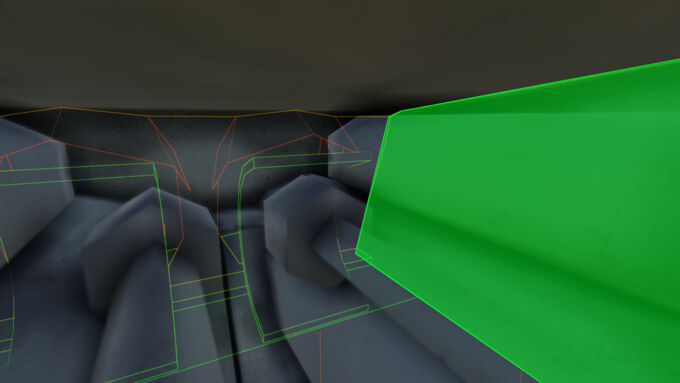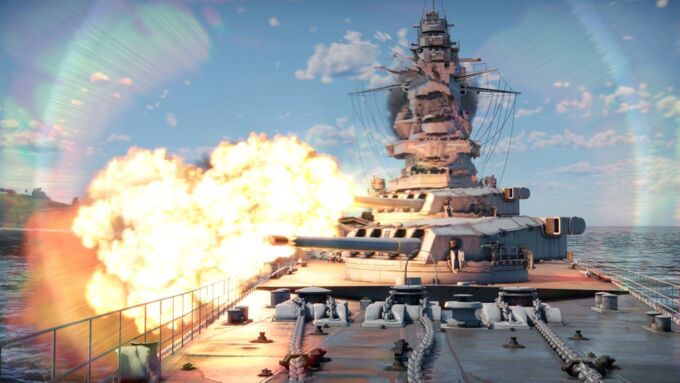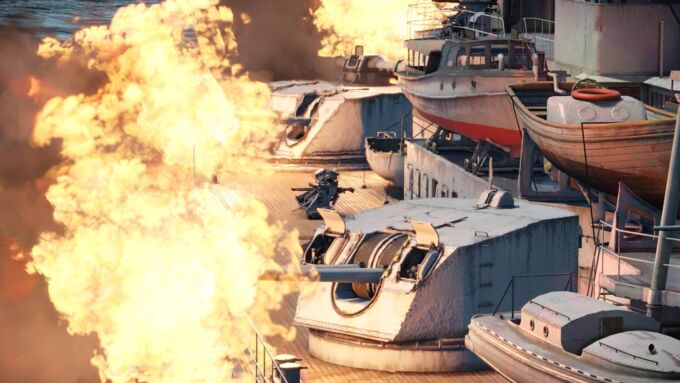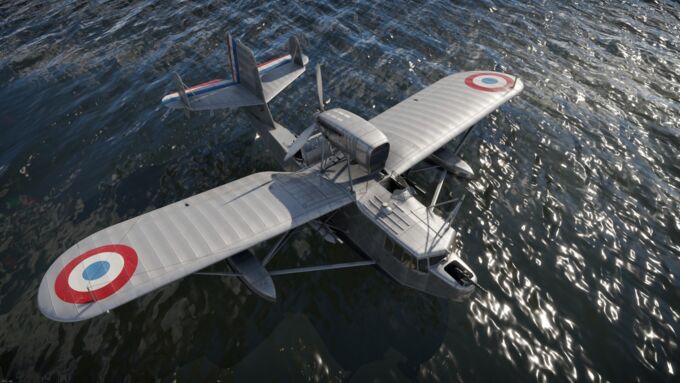Dunkerque can best be described as a ship that excels in downtiers but struggles significantly in uptiers. While she may be an exciting vessel to unlock, being the ultimate French ship in the game at the time of her release, it is important to moderate expectations. Like all other vessels at BR 6.7, she finds herself in a challenging position, where many top-tier ships can penetrate her magazines, while she cannot retaliate effectively.
On the other hand, much like her real-life counterpart, she can decisively dominate cruisers and destroyers. She is highly effective against vessels within her BR. In fact, it could be argued that she ranks among the top three BR 6.7 vessels in the game as of the Firebirds (2.41) patch.
Moderate your expectations, choose your targets carefully, and you can have an excellent time with her.
| Pros | Cons |
|---|---|
| • Excellent firing angles for both primary and secondary weapons • Very high sustained TNT equivalent per minute for the HE and SAP shells (if they manage to penetrate the target) • Multiple redundant fire directors along with a well-protected bridge and steering gear | • Main gun magazines are prone to exploding • Penetrating a turret will cut down the firepower by half • Inadequate penetration of the SAP shells and no dedicated AP rounds • Lack of radar, HE-VT shells, along with very poor 37 mm autocannons and a small number of low-calibre guns, are resulting in relatively poor anti-air armament |
Survivability and armour
Dunkerque is a relatively interesting design, as far as survivability goes. On paper, her armour scheme is very capable, with fascinating multi-layered design.
Looking at the side armour around the main gun magazines: you will first find the external skin of 25 mm structural steel (which provides marginal protection) which covers the 225 mm armour at -11 to -13° construction angle (that inverse slope makes armour extra-effective against plunging fire). Then there’s a second layer of internal armour, 40 mm at 27° construction angle, and behind that, further 40 mm at 0°. Inside the vessel, along most of the length of the hull, there’s an additional fuel tank further separated with 25 mm structural steel from the magazines and engines.
This complex protection, however, creates an illusion of safety.
The armour scheme makes it virtually impossible for cruisers to penetrate the side armour, either with direct or plunging fire. However, battleships armed with AP shells have a chance, at just the right range, for a lucky shell to dive straight into the magazines.
Furthermore, the front armour is only 210 mm thick, making it an attractive target for multiple vessels. A number of cruiser-calibre guns have AP shells capable of penetrating over 210 mm at realistic combat ranges and angles of attack (e.g. the APHEBC shells of the 20 cm 3rd Year Type guns used by cruisers such as Tone). This makes it virtually impossible to bow tank with the Dunkerque.
In a way, she’s similar to the Tiger tank — you should never expose her front armour directly to the enemy. Instead, always remember to angle. If possible try reverse-angling, under favourable circumstances she can be more survivable with her aft exposed, rather than the bow.
Mobility
For a battleship, Dunkerque is relatively mobile, having good speed in a straight line, acceptable turn rate and a well protected bridge and steering gear, making it more likely for her to maintain high mobility under enemy fire. That said, this mobility is limited by her large size, in effect, making it essential to plan two steps ahead especially when it comes to evading enemy torpedoes.
Primary armament
Dunkerque has one of the most unique primary armaments among battleships in the game, being armed with two quad-mount turrets of 330 mm at the bow of the ship. The turrets are protected by 310 mm cemented armour over barbettes and a further 330 mm turret face at a 22° construction angle, making them unlikely to stop most of the battleship-grade AP shells, but they are relatively safe from SAP rounds or vessels armed with lower-calibre guns.
While the main calibre turrets mount two twin main calibre guns, the destruction of even one pair will always disable all four guns.
This is despite the fact that the vessel’s model correctly includes the internal bulkhead that the ship historically had between each pair of guns.
The Dunkerque class was the first of a few classes of vessels that employed this solution to be added to the game, though it is not currently supported in the game engine. In real life, the feature was designed to allow one pair of guns to remain operational after an internal explosion in one half of the turret. While it was not a perfect solution (e.g., all turrets on naval vessels could become stuck from non-penetrating hits, and a high-calibre shell detonating inside the turret would likely breach the bulkhead with ease), it did increase the likelihood of the guns remaining at least partially operable.
The gun comes with two types of shells:
- SAPCBC — Despite being named “330 mm OPF”, 330 mm Obus Perforant, or Armour Piercing, the shells are modelled as SAPCBC due to their unusually high percentage of explosive filler. This, in the calculation method used for War Thunder’s naval mode, gives them 540 mm penetration at 0° at 1000 m, which in effect means that the guns are unfit to deal with the top-tier battleships Dunkerque will commonly encounter in battles. That said, the large explosive filler, high muzzle velocity, and average spread make them perfectly capable of dealing with lower BR battleships and heavy cruisers with ease.
- HE — With an impressive filler, equivalent to 66 kg, or over triple that of the SAP, the high-explosive rounds are able to easily overwhelm any soft target, with even a single shell being capable of inflicting a crippling amount of damage. With an average of over 1 tonne of TNT fired every minute, Dunkerque’s sustained TNT equivalent on target is comparable to IJN Mutsu or USS Tennessee, making her relatively efficient at stripping the crew off exposed positions and initiating fires.
In real life, Dunkerque was equipped with 330mm Mle 1935 Obus de Perforation de Rupture Coiffé (abbreviated OPf RC) shells, which translates to “Capped Armour-Piercing shells”. These shells featured a fairly large bursting charge and a special variable-time (or double-fusing) base fuse. This fuse utilised the deceleration of the shell to control the fusing time—thinner armour slowed the shell less, resulting in a shorter fuse delay, while thicker armour slowed the shell more, resulting in a longer fuse delay. That fuse prevented the shell from over-penetrating soft targets such as the Deutschland-class.
In the game, the developers followed the lead of NavWeaps and determined that the shell characteristics (particularly the thickness of the armour-piercing cap) were more akin to those of an SAP shell. As a result, they classified it as such.
Despite NavWeaps famously claiming 713 mm penetration at 0° at 0 metres range (compared to 579 mm at 0° at 0 metres in-game), articles posted on NavWeaps or other similar websites are not regarded as a reliable sources as far as War Thunder bug reports go.
Furthermore, War Thunder does not rely on fixed, manually input penetration values. Instead, penetration is calculated using the Jacob de Marre formula, which factors in calibre, velocity, shell weight, and the weight of the explosive filler.
This method ensures a reliable, impartial system that bypasses the variations in methodologies adopted by different countries (or historians) and provides consistent values for guns lacking historical penetration data. You can try the calculator yourself on the wiki.
Secondary armament
Quite unusually, the secondary armament is split into two types of 130 mm turrets — an aft cluster of three quad-gun turrets and an additional set of twin-gun turrets on each side of the main superstructure. Sharing very good firing angles and an unusually high rate of fire for the secondaries on a battleship, these guns are effective counters to torpedo boats and destroyers alike. With the secondaries being able to easily fire five times for each full reload cycle of the main guns, it is possible to effectively use them in manual control, ensuring maximum accuracy and the ability to deal with multiple targets simultaneously.
Anti-aircraft armament
Armed with 5 twin 37 mm/50 Model 1933 guns and 8 quad 13.2 mm Hotchkiss machine guns, Dunkerque outperforms any World War One-era battleship but falls significantly short when compared to the typical World War Two refits of battleships.
The 37 mm/50 Model 1933 is the weakest gun in its calibre range, with an exceptionally poor rate of fire, no HE-TF or HE-VT shells, and a vertical guidance limit of only +80°.
The quad Hotchkiss machine guns will serve as the primary anti-aircraft weapon, offering the highest hit probability and the only weapon with +85° vertical guidance.
Lastly, the secondary guns may provide additional support to the Hotchkiss guns due to their HE-TF shells.
Overall, Dunkerque will struggle against dive bombers, particularly those performing vertical dives or approaching from angles directly ahead of the vessel, where its anti-aircraft coverage is most limited.
Scout plane
Equipped with two Loire 130C hydroplanes armed only with defensive turrets and two 75 kg bombs, Dunkerque can capture points and create effective smoke screens but will struggle when contesting against other aircraft, even the most basic hydroplanes with offensive armament. In theory, you can utilise the frontal turret, but this is extremely tricky due to its limited vertical guidance and is useful only against aircraft lacking their own defensive armament.
The bombs can largely be ignored, as the hydroplanes are so fragile that they are unlikely to reach the drop location before being destroyed by enemy anti-aircraft fire.
First battles in Dunkerque
By the time you unlock Dunkerque, you are likely a very experienced player, so you should be able to master her quickly. Nonetheless, a few hints might still prove helpful:
- Never sail directly towards an enemy warship. Instead, angle your ship where feasible, reverse-angling can also be effective.
- If no enemy bombers have spawned, you can try positioning yourself behind low, hard cover, such as islands or piers, to shield your magazines while still being able to fire all your guns at enemy vessels. This will make you an extremely difficult nut to crack, if done right.
- Against battleships, your armour performs best at medium to long range. Against destroyers, you can approach point-blank range without much concern for their guns.
- Always watch for enemy torpedoes!
- Remember to make good use of your scout plane — not just for capturing points, but also for smoke screens and spotting incoming torpedoes.
- Be selective about which targets you engage. If you’re being focused by the enemy, identify which vessel is targeting you and disengage if you’re facing guns with high penetration capabilities. Do not overcommit! Dunkerque might look like a star, but she performs best from the second line.
- If you have a Premium Account, before playing with her, go to Preferred Missions and down-vote or ban open-sea maps (such as Denmark, La Manche, Jungle or New Guinea). Having one of the largest silhouettes in the match, she is at a significant disadvantage in open, exposed sea, much more so than the average battleship.
